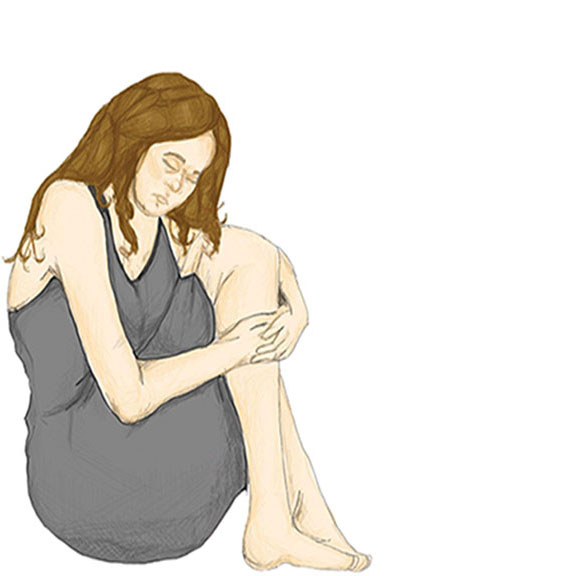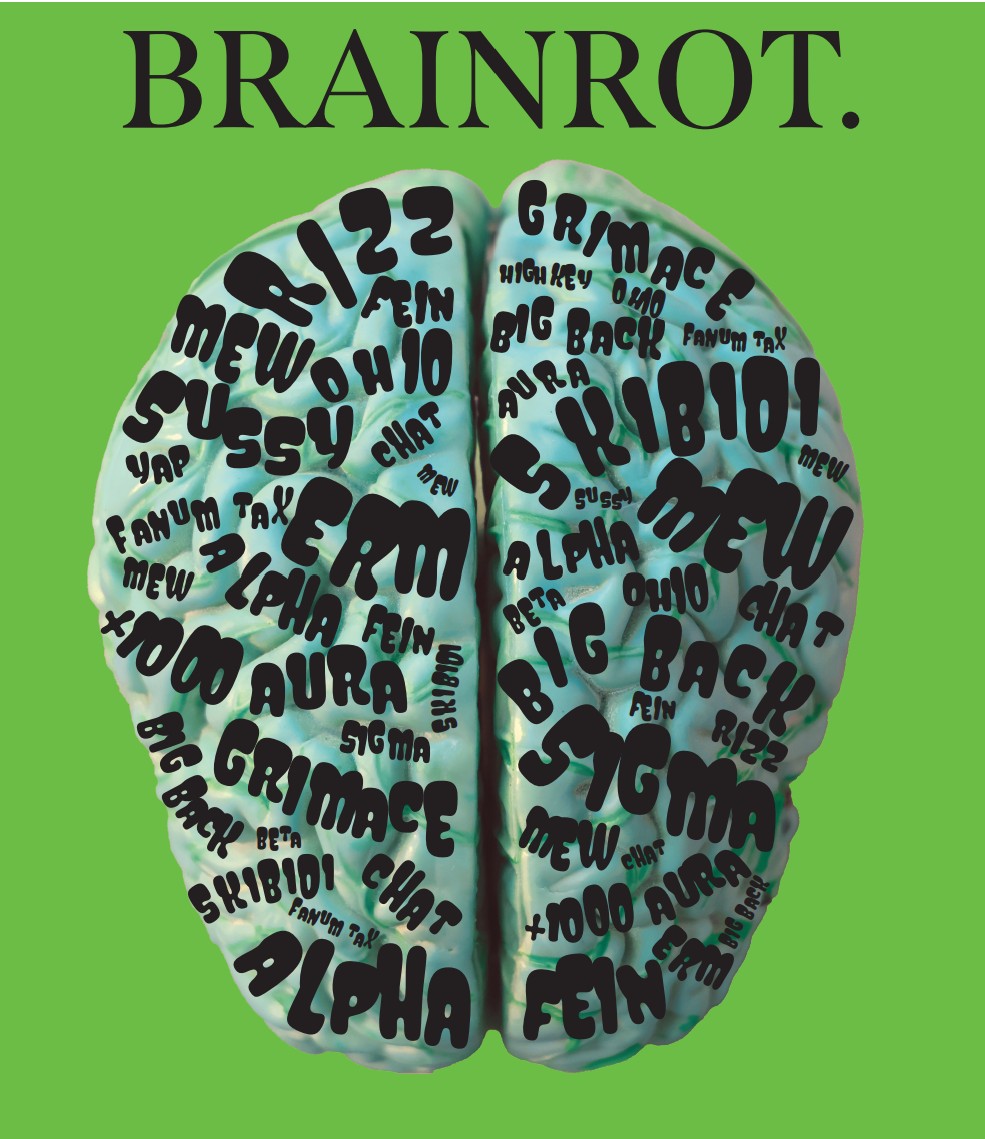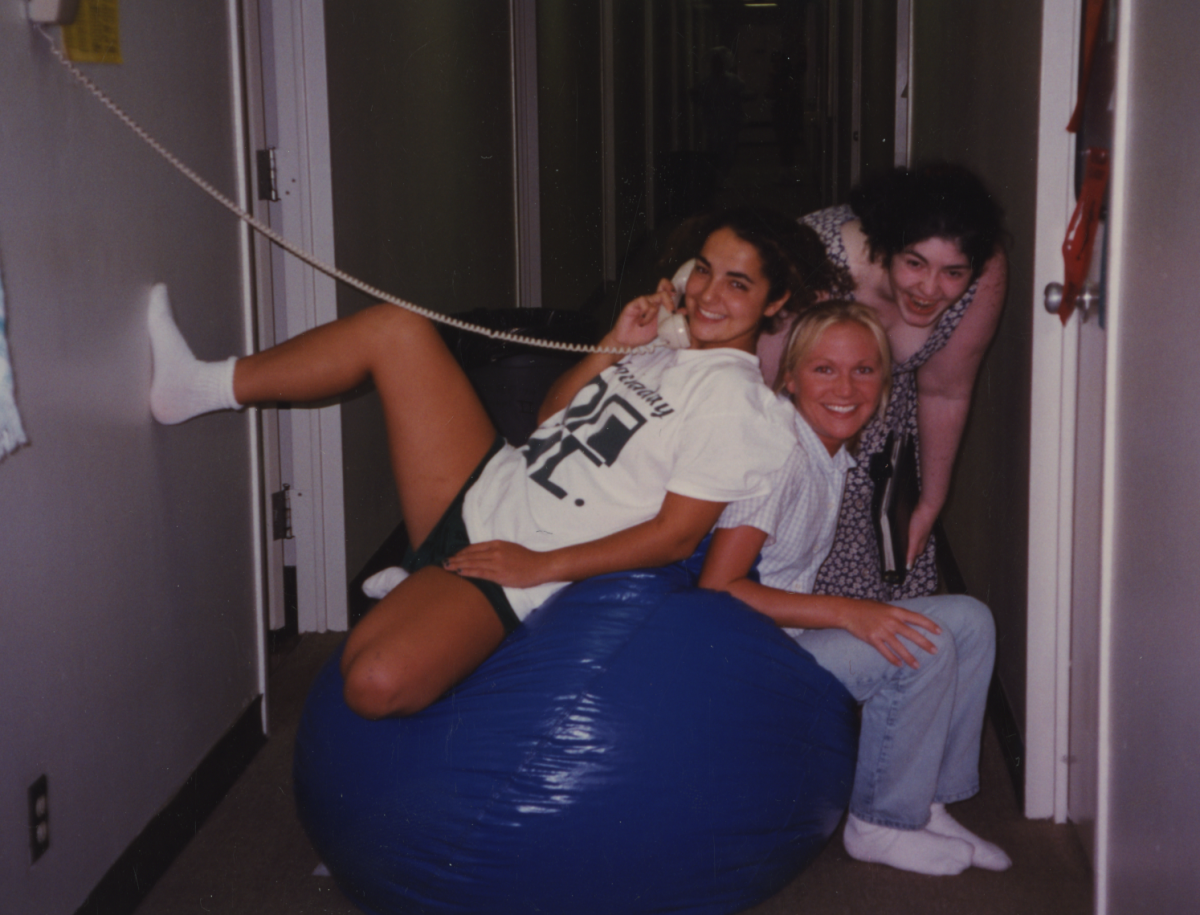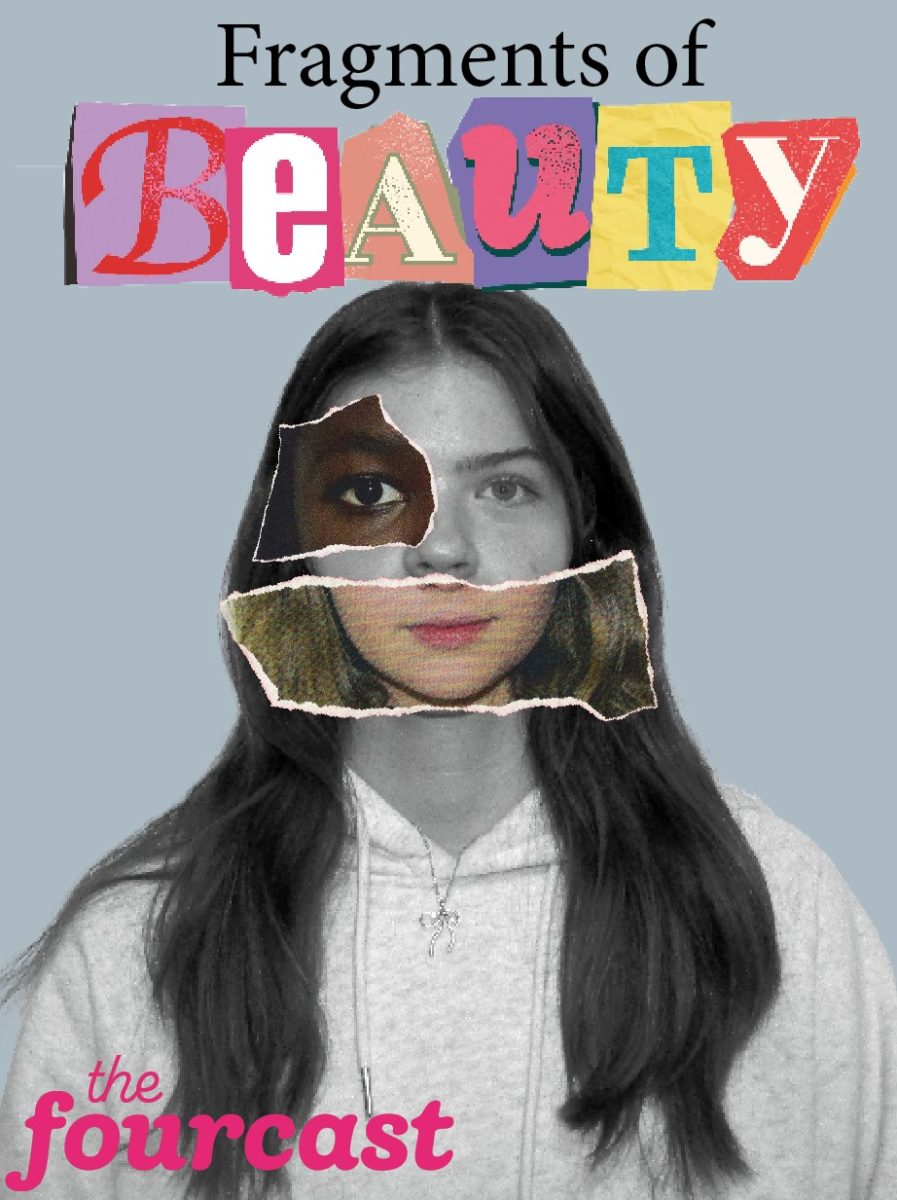Friday. March 2011. A 12-year-old girl sits apart from the rest of her seventh grade class during recess. Dressed in a plaid skirt and saddle oxfords, she huddles inside the protection of her St. John’s Episcopal School blazer, doing her best to ignore the heat from the Texas sun. That 12-year-old girl began attending The Hockaday School in ninth grade and is now a 15-year-old sophomore. Her name is Helena Hind, and her scars are her secret.
The night before that Friday in the middle of March, Hind picked up a razor blade and cut into her skin. She knew that she would have to go to school the next day. She knew that it was a blazer day. And she knew that during recess, everyone would take their blazers off.
Hind covered her scars with bandages—the thick ones that are designed for knees. And she kept a stack of bandages in the pocket of her blazer, just in case.
“For me, depression is the absence of feeling,” Hind said. “You just kind of feel like you’re walking around in a fog, like everything’s happening but nothing’s really affecting you.”
And that is what Hind felt on that day in the middle of March.

A Warped Perspective
“Depression is feeling blue and not yourself.” – Anonymous Upper School student
But for those that live with depression, like Hind, it’s more than just feeling blue.
In a recent survey conducted by The Fourcast, 56 percent of the 169 Upper School students who responded said that they have suffered from depression at some point in their lives. However, only 33 percent of these girls have actually been diagnosed and treated by a professional.
According to Child and Adolescent Psychiatrist Salomon Grimberg, M.D., depression is often confused with sadness. However, there is a distinct separation between the two terms.
“Sadness is a very interesting state of mind,” Grimberg said. “People who are sad are not really unhappy, and they’re also not depressed.” Instead, he describes sad individuals as “contemplative” and “reflective,” with a tendency to “see life the way it is, with extreme clarity.”
In Hind’s opinion, people who read about symptoms of depression immediately jump to the conclusion that they are depressed. However, symptoms must be consistently present for two weeks or longer in order to determine a diagnosis of major depressive disorder.
“You may have what appears to be a symptom of depression momentarily, but if you have it consistently for a certain amount of time, then you have a mood disorder,” Grimberg said. “People don’t know the difference because the average kid does not stop to think about the difference between sadness and depression; they’re not synonyms.”
Upper School Counselor Margaret Morse, Ph.D., agrees with Grimberg, and explained that there is an enormous difference between depression and being depressed for a couple days.
“When you are hit with clinical depression or major depressive disorder, it alters your motivation, your sleep, your eating, your thoughts – it’s kind of all-consuming,” Morse said.
Freshman Clara Demian has never been professionally diagnosed with depression. However, at various stages in her life, she has felt as if she was drowning in sadness. And she just couldn’t get above it.
According to Demian, the general public views depression in three different ways:
“One is that it’s completely ignored and just seen as people being selfish or hormonal,” she said.
However, both matured adults and innocent children can be diagnosed with depression. “The second view is that it’s romanticized because people say, ‘Oh it’s so beautiful that you’re feeling all of your sadness.’ And then the third view is by people who have it or people who actually know what it is,” Demian said.
The symptoms of depression are not as visible as those of the common cold: there is no cough, no sneeze and no stuffy nose. Oftentimes, this makes it difficult to understand the legitimacy of this mood disorder. According to Student Diversity Board Chair senior Anesu Nyatanga, who headed the Student Diversity Board’s Disabilities Forum last year, depression is stigmatized for a variety of reasons, but primarily due to its elusive nature.
“I think there is a large stigma surrounding all mental health disorders, but I think especially depression because it’s hard to identify sometimes,” Nyatanga said. “We also tend to think that because it’s not especially visible, that people can just ‘get over it,’ when often times, those are the hardest diseases to get over because they’re so pervasive.”
From a young age, a junior, who agreed to speak under the alias Nadia, watched as her mother battled depression. Nadia didn’t understand what was going on. She didn’t understand why her mom couldn’t function, why she couldn’t work or why she couldn’t get out of bed for days at a time. “It affected our lives in a scary way, ways where she was hospitalized and I couldn’t live with her and I had to live somewhere else,” Nadia said. “I guess from those experiences, it probably overlapped into my own depression and unfortunately hit me hard last year.”
Nadia agrees with Nyatanga: depression is not always a visible disorder, which makes it difficult for people to comprehend.
Living with Depression
“Depression is like swimming in the ocean. You think you understand it and can deal with it. Then, out of nowhere, you get hit by a wave and you’re drowning in it.” – Anonymous Upper School Student
Hind was a 7-year-old girl when she was diagnosed with major depressive disorder. After her parents’ divorce, she would often find herself crying at the smallest things.
She didn’t completely understand her depression at this age. She didn’t exactly understand her feelings. She didn’t know what the word depression meant. But she did know one thing for sure: she felt sad all the time, and she didn’t want to be sad anymore.
According to the American Psychiatric Association, depression is “a serious medical illness that negatively affects how you feel, the way you think and how you act.” Symptoms include, but are not limited to, “changes in appetite that result in weight losses or gains unrelated to dieting, insomnia or oversleeping, loss of energy or increased fatigue, restlessness or irritability, feelings of worthlessness or inappropriate guilt, difficulty thinking, concentrating, or making decisions and thoughts of death or suicide or attempts at suicide.”
Nadia’s mother was diagnosed with severe depression when Nadia was a young girl, while Nadia herself was diagnosed with moderate depression last year. The fifth edition of the Diagnostic and Statistical Manual of Mental Disorders classifies depressive episodes as mild, moderate or severe. According to the DSM-IV, “these severity subtypes rely on three different measures of severity: number of criteria symptoms, severity of the symptoms and degree of functional disability.”
The Public Broadcasting Service’s Health Campaign in 2008 entitled “Take One Step” revealed that one in four young adults will experience a depressive episode by age 24. Morse believes that individuals who have had a depressive episode are more likely to experience another one.
“It’s like exercising a muscle,” Morse said. “Once you’ve gone through a depressive episode, your brain has been depressed so when you get down again, it remembers being depressed and might go there quicker.”
Grimberg describes depression as something indigenous: something that takes place within your body, independently from anything outside. However, he also explains that depression can be a reaction to an external situation or event. Individuals living with depression are oftentimes living without the thing, animal, person or feeling that once made them happy.
“Human beings are like machines; they’re machines made up of chemicals. People have automobiles, and they know that sometimes, some parts of some automobiles don’t work as well and you need to replace them,” Grimberg said. “Human beings are like that. They may be missing the part that regulates their mood, and for that, they take replacements such as medication.”
Although the word “depressed” may be used in everyday conversation, depression is as real as any other illness or disorder. Morse believes that using the word as an adjective is not disrespectful, as long as it isn’t taken out of context.
“I think it’s legitimate when people say ‘I feel down or depressed today,’” Morse said. “If you look at the definition of depression, it has its own meaning as an adjective. I don’t think it’s abused.”
However, as someone who’s been diagnosed with depression, Nadia believes that individuals should be more mindful when using the term. “There’s definitely a line,” Nadia said. “I think we overstep it without really understanding or knowing.”
Hiding the Truth
“You feel like no one is there for you–that no one understands you anymore, or has the ability to understand. It’s like walking down a dark tunnel, but you can never see the light at the end of it.” -Anonymous Upper School student
Hind came across a post about self-harming on Instagram: “Hurting yourself shouldn’t be a way to get attention, and if you do it just for that, then you sicken me.” The post included a caption that then asked its viewers: ‘what is your opinion on self-harm?’
Hind decided to respond to the post.
People who do any type of self-harm do it for different reasons. Some, including me, do it to punish themselves. Some depressed people feel so numb that they do it to feel something. Some do it because they feel helpless and want someone to care. The list goes on and on. I have scars, emotional and physical, and I am not proud of them. I drew attention to myself, especially around my family so someone would notice [my scars] and help me. That’s the reason why some depressed people post pictures of their scars on the internet; so someone will notice or care. Is that such a crime? Instead of shaming people who self-harm, you should feel compassion, because you really have no idea why they’re doing it. You never know if the hurtful thing you say will be the straw that breaks the camel’s back.
According to Hind, posts such as these “stem from ignorance.” She believes that by educating themselves, “people would probably learn to be a little more cautious with their word choice.”
Nyatanga has noticed that on television, there aren’t a lot of characters who are depressed, which creates for an interesting case since by the year 2020, depression will be the second most common health problem in the world, according to “Take One Step.”
“When I took my psychology course, the main fact that my teacher stressed was that depression and schizophrenia are universal,” Nyatanga said. “It is everywhere. It surpasses all classes, all races, all genders, but you don’t see it.”
Because depression is as widespread as other illnesses but not acknowledged to the same extent, individuals with depression may choose to keep to themselves. “If you have it, you’re afraid to bring it up because what if someone judges you for it? What if someone just tells you to get over it?” Nyatanga said.
Nadia described depression as “a medical, chemical disorder,” and it hurts her when people argue against its validity. “People will give you the whole ‘just cheer up’ or ‘why can’t you just feel better?’ or ‘try to be positive,’ and that’s when it affects people: when people don’t believe that it’s real,” Nadia said. “It starts this whole cycle of self-doubt and then more depression.”
This society has a certain definition of what it means to be “normal.” According to Hind, that definition is the primary reason as to why people hide their depression.
“People just want to fit in, so when people have depression, they put on this mask where they’re like “oh I’m fine, I’m not sad or anything,” when in reality they’re anxious or depressed or stressed out about a lot of things,” Hind said. “I think there’s such a big stigma around depression and mental illness in general because if you’re not the norm, then you’re weird.”
Individuals also tend to hide their depression because they are unsure as to how it will affect people around them.
“People are afraid that it’s going to disappoint someone, it’s going to scare people away, it’s going to affect people around them in a way that they’d rather just hide and keep to themselves and think that they can overcome it by themselves,” Nadia said. “It all goes back to the whole stigma.”
Erasing the Stigma
“Anyone can have depression. It is not a character flaw or choice. It is an illness and can be treated.” – Anonymous Upper School Student
Hind has come a long way since she was first diagnosed. Her depression has been a journey; it’s been a cycle of feeling hopeless to hopeful.
She no longer curls up in the handicap stall of a school bathroom, hugging her knees and crying as she did in seventh grade. She no longer self-harms. Her journey now includes erasing the stigma that hangs over depression.
“I think people need to realize that they have no idea what’s going on in someone’s head,” Hind said. “Before you invalidate someone’s problems or before you say ‘you’re not really depressed,’ take a second to think about it. Just really think before you say something to a potentially depressed person because in their mind, a depressed person can warp it to make it seem way worse than it actually is.”
Sandra Cook, Hind’s grandmother, has supported Hind since the 7-year-old was first diagnosed with depression. Under her grandmother’s care, Hind has learned to accept her depression rather than conceal it.
“It was painful for me to see Helena depressed when she was so young. Fortunately, with the excellent treatment resources available in the community, she is much better,” Cook said. “By sharing her experience with others, she hopes to tear down prejudice and, perhaps, offer hope to others.”
Similarly, Nyatanga is working to help others further understand depression.
“It’s a problem that can be attacked at multiple fronts. I don’t know if the stigma is 100 percent removable. I don’t think there’s a quick solution to it,” Nyatanga said. “But talking about the issue, I think if we move it into the main sphere of conversation, people will feel more comfortable.”
According to Morse, telling someone and receiving help is the best way to overcome this mood disorder. “When it comes down to it, depression is a treatable disorder. There’s no reason you need to suffer any longer on your own,” she said.
Hind, Nadia and Demian are proof. It gets better if you get the proper help. “For people who may not know if they’re depressed or not, it’s not a bad thing to be depressed. It’s not a bad thing to feel like this,” Hind said. “I’m sure everyone feels like this at some point in their life to some degree.”
While admitting it and telling someone about how you feel can be daunting, it’s the first step to living a healthier, happier life.
“Don’t be afraid of your feelings and don’t invalidate what you feel because there’s no way to be sure unless you’re willing to make a change or help yourself,” Nadia said. “No one else can.”
– Inaara Padani



















